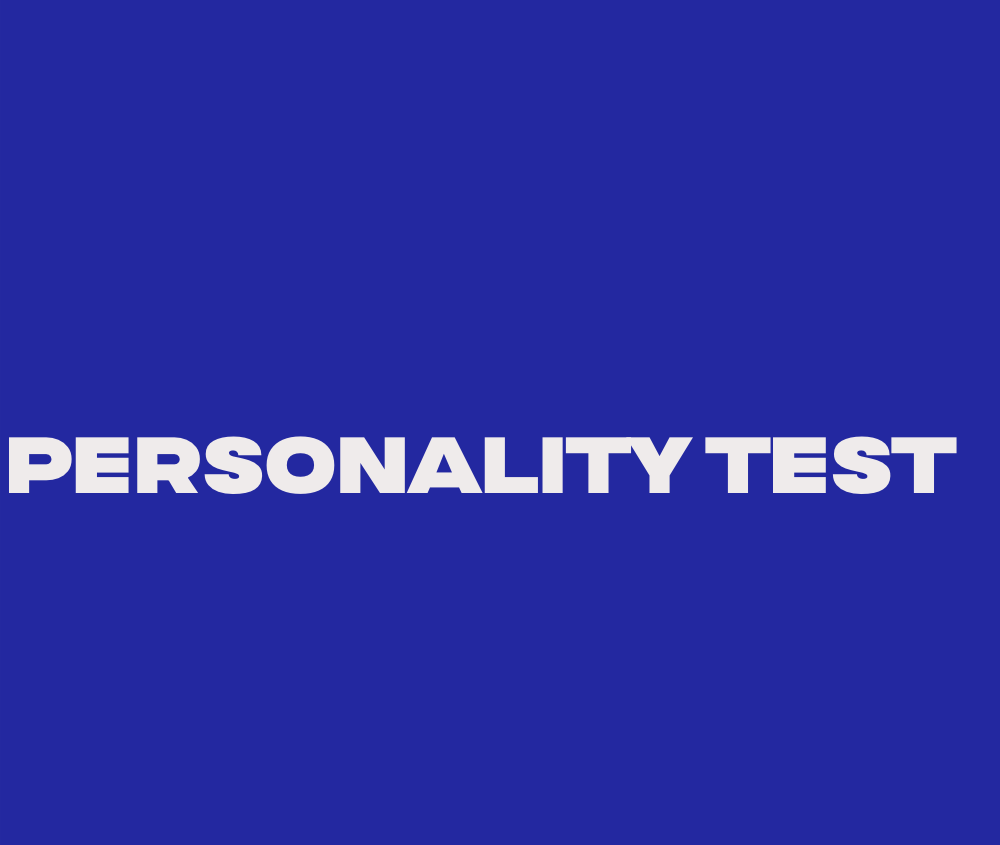Personality Exploration
Discover Your Traits: Personality Disorders Test

Did you know that over 9% of the U.S. population is affected by personality disorders? That’s approximately 30 million people grappling with challenging emotional and mental patterns that can impact their daily lives. If you suspect that you or someone you know may be experiencing symptoms of a personality disorder, taking a personality disorders test can be a valuable tool in identifying potential signs and seeking appropriate treatment.
Key Takeaways:
- A significant portion of the U.S. population, approximately 30 million people, are affected by personality disorders.
- Taking a personality disorders test can help identify potential signs of a personality disorder.
- A personality disorders test cannot replace a professional diagnosis, but it can provide insights into emotional and mental patterns.
- If you experience symptoms such as intense loneliness, fear of abandonment, distrust of others, or chronic suicidal thoughts, seeking treatment from a licensed mental health provider is recommended.
- By understanding and addressing potential personality disorders, you can embark on a journey towards improved emotional well-being.
Understanding Personality Disorders
Personality disorders are mental health diagnoses characterized by patterns of behavior and thinking that impact relationships. These disorders can make it difficult to navigate interpersonal connections and contribute to feelings of disconnection, conflict, and emptiness. Individuals with personality disorders often experience challenges in establishing and maintaining healthy relationships, leading to distress and impaired functioning in various areas of their lives.
A personality disorder assessment, based on the DSM-5 criteria, can help identify specific symptoms and guide treatment options. The Diagnostic and Statistical Manual of Mental Disorders, Fifth Edition (DSM-5), provides a comprehensive framework for diagnosing and classifying personality disorders. It outlines specific criteria that mental health professionals use to assess and evaluate the presence of personality disorders.
“Personality disorders are mental health conditions characterized by enduring patterns of thinking, feeling, and behaving that deviate from cultural expectations and cause significant distress or impairment. These patterns are ingrained and inflexible, often stretching back to adolescence or early adulthood.”
Personality disorders can manifest in various ways, each with its distinct set of symptoms and characteristics. Some common types of personality disorders include:
- Borderline Personality Disorder
- Antisocial Personality Disorder
- Narcissistic Personality Disorder
- Obsessive-Compulsive Personality Disorder
- Avoidant Personality Disorder
- Histrionic Personality Disorder
- Dependent Personality Disorder
- Schizoid Personality Disorder
Each personality disorder has unique features and diagnostic criteria as outlined in the DSM-5. Understanding these criteria can provide insights into the nature of the disorder and guide appropriate treatment approaches.
Borderline Personality Disorder (BPD)
BPD is characterized by emotional instability, intense and unstable relationships, impulsive behavior, and an unstable sense of self. Individuals with BPD often experience extreme fear of abandonment, engage in self-harming behaviors, and struggle with chronic feelings of emptiness.
Antisocial Personality Disorder (ASPD)
ASPD is characterized by a disregard for the rights and feelings of others. Individuals with ASPD may engage in criminal behavior, lie or manipulate others for personal gain, and demonstrate little remorse for their actions.
Narcissistic Personality Disorder (NPD)
NPD is characterized by an excessive preoccupation with oneself, a grandiose sense of self-importance, and a lack of empathy for others. Individuals with NPD may have an exaggerated sense of entitlement and require constant admiration and attention.
Obsessive-Compulsive Personality Disorder (OCPD)
OCPD is characterized by a pattern of perfectionism, rigid adherence to rules, excessive attention to details, and a need for control. Individuals with OCPD may place a significant focus on order and organization and have difficulty delegating tasks to others.
Avoidant Personality Disorder (AvPD)
AvPD is characterized by social inhibition, feelings of inadequacy, and hypersensitivity to criticism or rejection. Individuals with AvPD often avoid social situations, have a deep fear of embarrassment, and may struggle to form close relationships.
Histrionic Personality Disorder (HPD)
HPD is characterized by excessive emotionality and attention-seeking behaviors. Individuals with HPD often have an intense desire for approval and may display dramatic or theatrical behaviors to gain attention.
Dependent Personality Disorder (DPD)
DPD is characterized by a pervasive need to be taken care of by others. Individuals with DPD have difficulty making decisions, fear being alone, and may rely heavily on others for support and guidance.
Schizoid Personality Disorder (SPD)
SPD is characterized by a detachment from social relationships and a limited range of emotions. Individuals with SPD may prefer solitary activities, have little interest in establishing close relationships, and tend to be emotionally detached in social interactions.
Understanding the different types of personality disorders can help individuals and their loved ones recognize and seek appropriate treatment. With a proper diagnosis and tailored treatment plan, individuals with personality disorders can work towards improving their functioning, relationships, and overall well-being.
Common Personality Disorders and DSM-5 Criteria
| Personality Disorder | DSM-5 Criteria |
|---|---|
| Borderline Personality Disorder (BPD) | Emotional instability, unstable relationships, self-harming behaviors, chronic feelings of emptiness |
| Antisocial Personality Disorder (ASPD) | Disregard for the rights and feelings of others, criminal behavior, lack of remorse |
| Narcissistic Personality Disorder (NPD) | Excessive preoccupation with oneself, grandiose sense of self-importance, lack of empathy |
| Obsessive-Compulsive Personality Disorder (OCPD) | Perfectionism, rigid adherence to rules, excessive attention to details, need for control |
| Avoidant Personality Disorder (AvPD) | Social inhibition, feelings of inadequacy, fear of rejection, avoidance of social situations |
| Histrionic Personality Disorder (HPD) | Excessive emotionality, attention-seeking behaviors, desire for approval |
| Dependent Personality Disorder (DPD) | Need for others to take care of them, difficulty making decisions, fear of being alone |
| Schizoid Personality Disorder (SPD) | Detachment from social relationships, limited range of emotions, preference for solitary activities |
Identifying and understanding personality disorders is an essential step in addressing the challenges they present. With the support of mental health professionals and appropriate treatment approaches, individuals with personality disorders can work towards managing their symptoms, fostering healthier relationships, and improving their overall quality of life.
The Importance of Self-Assessment
Starting your journey towards understanding your emotional health can be overwhelming. A mental health quiz, while not a substitute for a professional diagnosis, can give you a general idea of whether you may have a specific mental health condition. This self-assessment can be the first step towards seeking treatment and finding the support you need.
It’s essential to prioritize your emotional well-being and take proactive steps towards better mental health. Self-assessment tools like a mental health quiz can provide valuable insights and help you gain a better understanding of your emotional health. While such quizzes do not replace a professional evaluation, they can serve as a starting point for identifying potential areas of concern and seeking appropriate treatment.
By taking a mental health quiz, you can gain valuable insights into your emotional well-being. This self-assessment tool allows you to reflect on your thoughts, feelings, and behaviors, helping you identify patterns and areas that may require further attention. While the quiz does not provide a diagnosis, it can offer guidance on whether seeking professional help is necessary.
Remember, a mental health quiz is not a substitute for professional advice or treatment. If you have concerns about your emotional health, it’s important to consult with a licensed mental health professional for an accurate diagnosis and tailored treatment plan.
Embarking on the journey towards emotional well-being starts with self-reflection and self-assessment. By taking a mental health quiz and being honest with yourself, you can gain insights into your emotional health and take the necessary steps towards finding treatment and support. Remember, seeking help is a sign of strength and a vital part of your well-being.
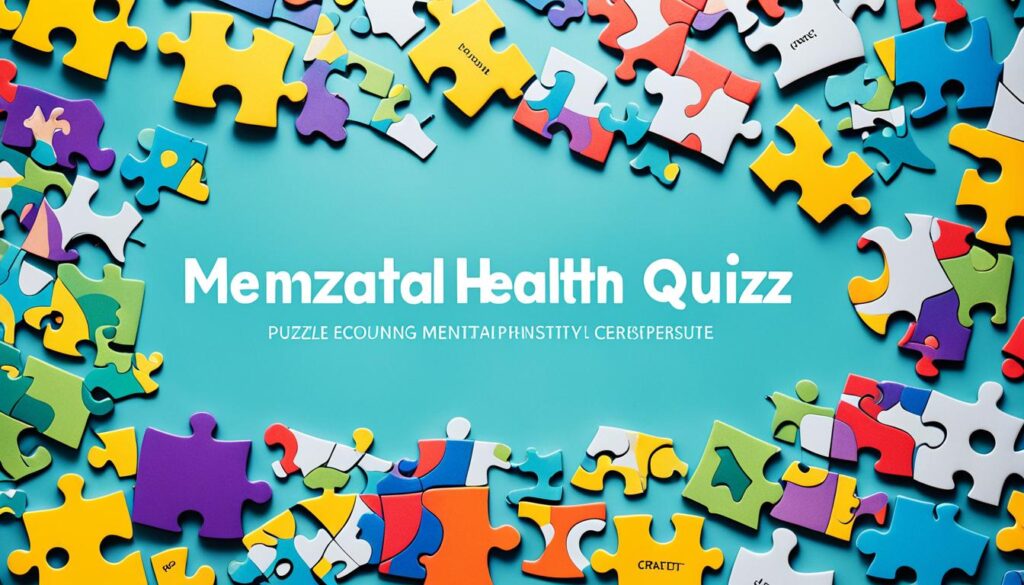
| Benefits of a Mental Health Quiz: |
|---|
| Provides a general idea of your emotional health |
| Identifies potential areas of concern |
| Prompts further exploration and reflection |
| Encourages seeking treatment and support |
Common Symptoms of Personality Disorders
Symptoms of personality disorders can manifest differently from person to person. However, there are common indicators that may suggest the presence of a personality disorder:
- Intense feelings of loneliness or emptiness
- Significant fears of abandonment in relationships
- Distrust of others’ intentions
- Disconnection from others or a strong desire to distance oneself from relationships
- Feelings of inadequacy and lack of empathy
- Patterns of interpersonal conflict
- Chronic suicidal ideation
These symptoms can cause significant distress and impact various aspects of a person’s life, including personal relationships, work, and overall well-being.
It’s important to note that these symptoms should not be self-diagnosed, as a professional evaluation is necessary to determine the presence of a personality disorder.
“Intense feelings of loneliness and fear of abandonment are often experienced by individuals with personality disorders. Distrust and a tendency to distance oneself from relationships can further contribute to interpersonal conflict and emotional distress.”
It’s essential to seek guidance from a licensed mental health provider if you or someone you know is experiencing these symptoms. Professional help can provide a thorough assessment, diagnosis, and appropriate treatment plan tailored to individual needs.

Taking the Personality Disorders Quiz
Are you ready to gain valuable insights into your personality traits? The personality disorders quiz is a powerful tool that can help you identify specific traits associated with personality disorders. By answering a series of thought-provoking questions, you can gain a deeper understanding of yourself and your emotional well-being.
During the quiz, you will be asked about various aspects of your behavior and attitudes. These questions are designed to explore your level of distrust and suspiciousness towards others, patterns of detachment from social relationships, and lack of desire for close relationships or family connection. The quiz will also delve into your experiences of social anxiety, difficulties in thinking or speaking, irritability, and chronic feelings of emptiness or loneliness.
In addition, the quiz assesses how you feel in situations where you’re not the center of attention, your reluctance to take personal risks, your preference for solitary activities, and your indifference to praise or criticism. By examining these different facets of your personality, the quiz aims to provide a comprehensive assessment of your emotional well-being.
Remember, the personality disorders quiz is not a diagnostic tool. It is an important step towards self-discovery and self-awareness. It can help you recognize potential indicators of personality disorders and guide you towards seeking professional help if necessary.
Example Questions from the Personality Disorders Quiz:
- Do you often find it difficult to trust others?
- Do you frequently feel detached from social relationships?
- Are you uncomfortable in situations where you’re not the center of attention?
- Are you reluctant to take personal risks?
- Do you prefer solitary activities over social interactions?
- Do you feel indifferent to praise or criticism?
Engaging in the personality disorders quiz can be a valuable step towards better understanding yourself and your emotions. However, it’s important to remember that the results of the quiz should not be used as a substitute for professional advice or diagnosis. If you have concerns about your mental health, it is always best to consult with a licensed mental health provider.

Interpreting Assessment Results
After completing the personality disorders quiz, your assessment results will be displayed. It’s important to remember that this self-assessment is not a diagnosis. If the results indicate potential symptoms of a personality disorder, it’s recommended to reach out to a licensed mental health provider for a professional assessment and guidance on treatment options.
Your assessment results serve as a starting point for a deeper exploration of your emotional and mental well-being. While they can provide valuable insights, it’s essential to consult with a licensed mental health provider for an accurate diagnosis and personalized treatment plan.
Seeking guidance from a licensed professional ensures that your concerns are addressed comprehensively and that you receive the appropriate advice and support. A licensed mental health provider possesses the expertise to evaluate your symptoms, consider your individual circumstances, and determine the most effective path forward.
Remember, a professional assessment goes beyond the self-assessment results, providing you with a comprehensive understanding of your mental health. It enables the identification of underlying factors and the development of an individualized treatment plan tailored to your specific needs.
Professional mental health providers employ a variety of assessment tools and techniques to gain a comprehensive understanding of your emotional well-being. These assessments include in-depth interviews, observations, and additional diagnostic evaluations, ensuring a thorough evaluation of your symptoms.
By collaborating with a licensed mental health provider, you can embark on a journey towards improved mental health and well-being. They will guide you through the assessment process and help you develop a personalized treatment plan that encompasses therapy, medication, lifestyle changes, and other recommended interventions.
Why a Licensed Mental Health Provider?
“A licensed mental health provider has the training and qualifications to identify and diagnose personality disorders accurately. They can help you navigate your assessment results, offer professional guidance, and provide evidence-based interventions that can improve your well-being.” – Dr. Emily Smith, Licensed Psychologist
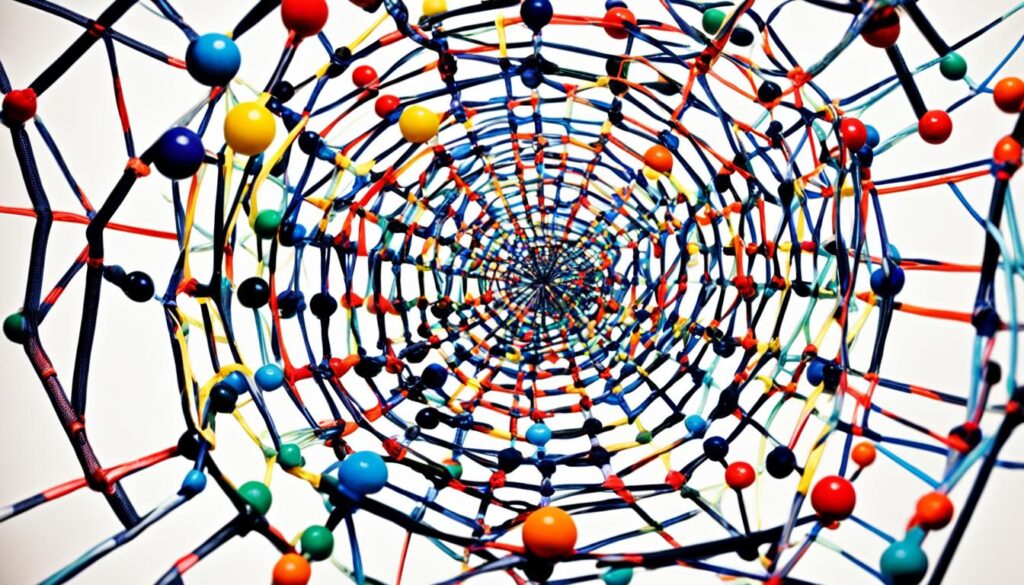
While self-assessment tools can be informative and provide a starting point, they are not a substitute for professional diagnosis and treatment. Licensed mental health providers possess the expertise necessary to interpret assessment results accurately and provide personalized recommendations based on your unique circumstances.
Remember, seeking help is a sign of strength and an important step towards your journey to emotional well-being. Reach out to a licensed mental health provider today to begin your path towards a healthier and happier life.
Unlocking Self-Discovery with Personality Disorder Screening
A personality disorder screening test can serve as a reflective journey through a series of statements to explore the layers of your personality. It’s important to take the test thoughtfully, considering whether the statements align with your behavior or attitudes for an extended period.
While the results of the test may raise flags for potential personality disorders, it’s crucial to consult with a doctor or mental health professional to obtain an accurate diagnosis and determine the most appropriate treatment plan.

Understanding the Personality Disorder Screening Process
The personality disorder screening test involves a series of questions that assess various aspects of your personality and behavior. These questions delve into different areas such as relationships, emotions, and worldview. By answering honestly and introspectively, you can gain valuable insights into your personality patterns and potential areas of concern.
The Importance of Professional Consultation
Although the screening test can provide indications of potential personality disorders, it’s essential to consult with a doctor or mental health professional for a comprehensive evaluation. They can thoroughly assess your results and consider other factors such as personal history, environment, and additional diagnostic criteria.
“The screening test serves as a valuable tool for self-reflection and initial exploration, but a professional consultation is necessary for accurate diagnosis and personalized treatment.” – Dr. Jane Turner, Psychiatrist
| Benefits of Professional Consultation | Drawbacks of Self-Assessment Alone |
|---|---|
|
|
The Role of Professional Diagnosis
It’s essential to understand that self-assessments and quizzes are not intended to replace a professional diagnosis. Only a trained medical professional, such as a doctor or mental health provider, can accurately diagnose mental health conditions. The purpose of these assessments is to help you assess your well-being and determine if further consultation with a professional is necessary.
While self-assessment tools can provide valuable insights into your mental health, they should not be seen as a substitute for a comprehensive evaluation conducted by a licensed professional. Professional diagnoses involve a range of factors, including in-depth evaluations, clinical expertise, and consideration of your unique circumstances and history.
A mental health professional has the knowledge and experience to accurately assess, diagnose, and treat mental health conditions. They are equipped with diagnostic tools and expertise in recognizing and interpreting symptoms, allowing them to develop personalized treatment plans that address your specific needs.
Consulting with a professional is crucial for proper evaluation and access to the most appropriate treatment options. They can guide you through the process, provide support, and offer recommendations based on your individual circumstances. Remember, seeking help is a courageous step towards taking control of your mental health and overall well-being.
“A professional diagnosis is an essential step towards understanding and addressing mental health conditions.”
Consultation with a Mental Health Professional
When you suspect that you may have a mental health condition, it’s essential to seek guidance from a mental health professional. Through an initial consultation, they can evaluate your symptoms, discuss your concerns, and provide a thorough assessment to determine the most appropriate course of action.
During the consultation, your mental health provider will likely ask you questions about your symptoms, medical history, and any related concerns. They may also perform additional diagnostic assessments or recommend specific tests to gather more information.
Based on the evaluation, the mental health professional will provide an accurate diagnosis and collaborate with you to develop a comprehensive treatment plan. This plan may involve therapy, medication, lifestyle changes, and additional support to address your mental health condition effectively.
Remember, reaching out to a mental health professional is a proactive step towards taking charge of your mental well-being. With their expertise and guidance, you can gain a better understanding of your condition and access the necessary support and treatment options.

“Consulting with a mental health professional is crucial for accurate diagnosis and tailored treatment options.”
Exploring Other Mental Health Tests and Quizzes
In addition to personality disorders tests, there are various other mental health quizzes and self-assessments available. These quizzes and self-assessments can provide a valuable opportunity to delve into different aspects of your mental well-being and gain insights into your emotional health. However, it’s important to remember that these online assessments serve as tools for self-reflection and should not be used as diagnostic tools to replace professional advice. If you have concerns about your mental health, it’s always recommended to seek guidance from a licensed mental health professional.
“Online quizzes and self-assessments can be helpful tools for self-reflection. However, they should not replace seeking guidance from a professional if you have concerns about your mental health.”
While quizzes and self-assessments cannot diagnose mental health conditions, they can provide you with a starting point for further exploration and conversations with a mental health professional. These assessments can be particularly useful in raising awareness and encouraging individuals to seek appropriate support and treatment. Remember, mental health is a complex and individualized journey, and the guidance of a professional can provide the necessary insight and expertise to navigate it effectively.
Types of Mental Health Quizzes and Self-Assessments
Here are some examples of mental health quizzes and self-assessments you may come across:
- Depression Screening Quiz
- Anxiety Self-Assessment
- Stress Level Quiz
- Substance Abuse Screening
- Sleep Quality Assessment
These assessments can help you gauge your mental well-being in specific areas and identify potential areas of concern. However, they should not be used in isolation to determine a diagnosis.
Consulting a Mental Health Professional
If the results of a quiz or self-assessment raise concerns or if you’re experiencing symptoms that impact your daily life, it’s important to seek guidance from a mental health professional. A licensed professional will be able to evaluate your situation, provide an accurate diagnosis, and recommend appropriate treatment options tailored to your specific needs.
Quiz Type Purpose Depression Screening Quiz Assess symptoms of depression Anxiety Self-Assessment Evaluate symptoms of anxiety Stress Level Quiz Measure stress levels Substance Abuse Screening Identify potential substance abuse issues Sleep Quality Assessment Assess the quality of sleep
Remember, while online quizzes and self-assessments can be helpful tools for self-reflection, consulting with a mental health professional is crucial to receive an accurate diagnosis and develop an appropriate treatment plan that addresses your unique needs.

Finding Support and Treatment
If you suspect that you may have a personality disorder or other mental health conditions, it’s crucial to seek support and treatment from a professional. A consultation with a mental health provider can provide an accurate diagnosis, guide treatment options, and offer the necessary support for your emotional and mental well-being. Remember, reaching out for help is a sign of strength.
“Seeking support from a mental health professional is an essential step in managing and treating mental health conditions. Our team of experts is dedicated to providing personalized care and helping individuals achieve mental well-being.”
Why Consultation with a Professional Matters
Consulting with a mental health professional is vital for several reasons:
- Accurate Diagnosis: A professional assessment can provide an accurate diagnosis, ensuring appropriate treatment and management strategies.
- Guidance on Treatment Options: A mental health provider can guide you through various treatment options, such as therapy, medication, or a combination of both.
- Expert Support: Professionals offer the expertise and support necessary to navigate the complexities of mental health conditions and provide ongoing care.
Take the First Step Towards Healing
- Contact a Mental Health Provider: Reach out to a licensed mental health professional who specializes in the treatment of personality disorders or other mental health conditions.
- Schedule an Appointment: Book a consultation to discuss your concerns, symptoms, and any previous assessments or tests you have completed.
- Collaborative Treatment Plan: Work together with your mental health provider to develop a comprehensive treatment plan tailored to your unique needs and goals.
- Follow Through with Treatment: Commit to attending therapy sessions, taking prescribed medications, and actively participating in your treatment to maximize its effectiveness.

| Treatment Benefits | Why It’s Important |
|---|---|
| Improved Quality of Life | Effective treatment can enhance overall well-being, leading to better relationships, increased satisfaction, and improved day-to-day functioning. |
| Reduced Symptoms | Professional treatment can help manage and alleviate symptoms associated with personality disorders, allowing for improved emotional stability and functioning. |
| Enhanced Coping Strategies | Mental health providers can teach valuable coping mechanisms to navigate the challenges of living with a personality disorder, promoting resilience and adaptive skills. |
| Support System Development | Working with a mental health professional can assist in building a strong support network, including therapy groups, loved ones, and community resources. |
The Journey Towards Emotional Well-Being
Understanding and addressing potential personality disorders or mental health conditions is a journey towards emotional well-being. It’s essential to prioritize your mental health and take proactive steps to seek the support and guidance you need. The journey may involve various components, including self-assessment, professional diagnosis, and suitable treatment options.
Self-Assessment: Taking the First Step
A crucial part of the journey towards emotional well-being is starting with a self-assessment. By examining your thoughts, emotions, and behaviors, you can gain valuable insights into your mental health. Online quizzes and tests can provide a starting point for reflection, allowing you to identify potential areas of concern and explore further evaluation.

Professional Diagnosis: Partnering with Health Experts
While self-assessment is an important step, it’s important to remember that online quizzes cannot provide a definitive diagnosis. Seeking a professional diagnosis is crucial for accurate insights into your mental health condition. Consulting with experienced healthcare professionals, such as doctors and licensed mental health providers, will enable you to receive a thorough evaluation and determine the most appropriate treatment options for your specific needs.
Treatment Options: Customizing Your Path to Healing
Once a professional diagnosis is established, you’ll have access to a range of treatment options tailored to address your emotional well-being. Treatment for personality disorders or other mental health conditions may include therapy, medication, support groups, lifestyle changes, or a combination of these approaches. Working closely with your healthcare provider will help you develop a personalized treatment plan that suits your unique circumstances.
Treatment Options Benefits Therapy Provides a safe space to explore emotions, develop coping mechanisms, and improve relationship skills. Medication Can help manage symptoms such as depression, anxiety, or mood instability. Support Groups Offer a sense of community, validation, and shared experiences, fostering a supportive environment for healing. Lifestyle Changes Emphasize self-care practices, including exercise, healthy diet, sufficient sleep, and stress management.
Remember, your journey towards emotional well-being is unique, and the treatment options that work best for you may differ from others. It’s important to reflect on your individual needs and collaborate closely with healthcare professionals to chart the most effective path to healing.
By embarking on this journey towards emotional well-being, you are taking a vital step in caring for your mental health. Through self-assessment, professional diagnosis, and appropriate treatment, you can cultivate a healthier and more fulfilling life. Remember, your well-being matters, and there is support available to guide you along the way.
Conclusion
Taking a personality disorders test or engaging in any mental health self-assessment is a crucial step towards gaining a better understanding of your emotional and mental well-being. While these assessments cannot provide a definitive diagnosis, they serve as valuable tools to identify potential indicators of personality disorders.
However, it is important to remember that self-assessments should not replace the guidance of a professional. Seeking the assistance of licensed mental health providers is key to receiving an accurate diagnosis and appropriate treatment for any mental health concerns.
By combining the insights gained from self-assessments with the expertise of professionals, you can embark on a journey towards improved mental health and overall well-being. Prioritizing your mental health is an essential aspect of leading a fulfilling and balanced life.
FAQ
What is a personality disorders test?
A personality disorders test is a screening tool that helps identify signs of a personality disorder. It can provide insights into your emotional and mental patterns, but it does not replace a professional diagnosis.
What are personality disorders?
Personality disorders are mental health diagnoses characterized by patterns of behavior and thinking that impact relationships and contribute to feelings of disconnection and conflict.
How can a mental health quiz help?
While not a substitute for a professional diagnosis, a mental health quiz can give you a general idea of whether you may have a specific mental health condition, such as a personality disorder.
What are the common symptoms of personality disorders?
Common symptoms of personality disorders include intense loneliness, fear of abandonment, distrust of others, interpersonal conflict, and chronic suicidal thoughts.
What does the personality disorders quiz assess?
The personality disorders quiz assesses traits associated with personality disorders, such as distrust, detachment, social anxiety, and preference for solitary activities.
How do I interpret my assessment results?
It’s important to remember that the self-assessment is not a diagnosis. If the results indicate potential symptoms of a personality disorder, it’s recommended to consult a licensed mental health provider for a professional assessment.
What does a personality disorder screening involve?
A personality disorder screening involves a self-reflective journey through a series of statements to explore your personality traits. It helps raise potential flags for personality disorders, but a professional diagnosis is necessary.
Can online self-assessments replace a professional diagnosis?
No. Online self-assessments cannot replace a professional diagnosis. Only a trained medical professional can accurately diagnose mental health conditions.
Are there other mental health quizzes available?
Yes, there are various other mental health quizzes and self-assessments available to explore different aspects of your mental well-being. However, they should not replace professional advice.
What should I do if I suspect I have a personality disorder?
If you suspect you have a personality disorder or any mental health condition, it’s crucial to seek support and treatment from a professional.
What is the journey towards emotional well-being?
The journey towards emotional well-being involves self-assessment, professional diagnosis, and treatment to prioritize your mental health and seek the necessary support and guidance.
Augustus is the visionary leader and Editor-in-Chief of Personality-Test.net. With an unwavering commitment to quality and authenticity, he oversees all content, ensuring it enlightens and empowers our audience. Augustus believes deeply in the transformative power of self-awareness and is dedicated to making Personality-Test.net a beacon for those on a journey to understand themselves better.
Enneagram of Personality
10 Signs of Demonic Influence in Enneagram Types
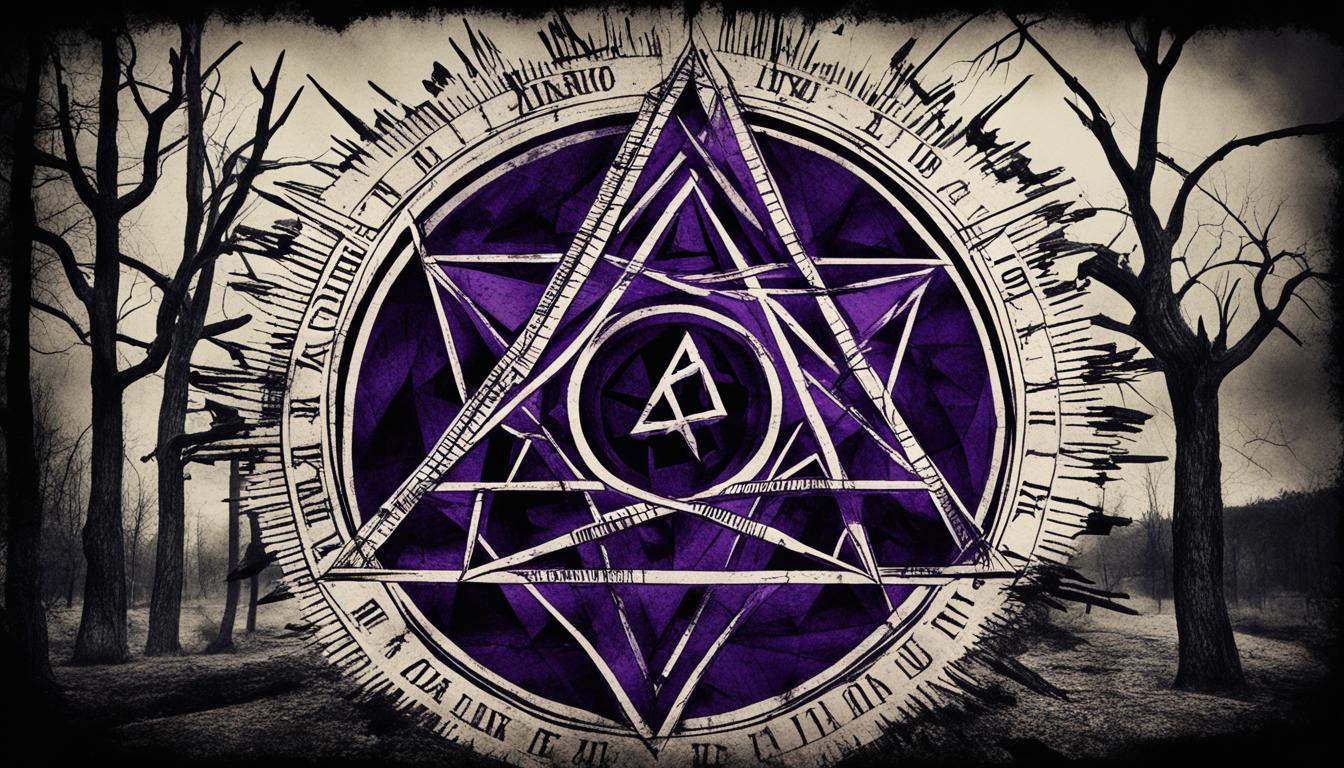
Welcome to our intriguing journey into the enneagram and its possible link to demonic influences. Were you aware that spiritual intervention can show itself in unique forms among various enneagram types? It’s a fact! Whether you doubt or have faith, you might be shocked by the effects of these influences. This piece will examine the signals and characteristics that could suggest the existence of demonic energy in the enneagram. So, get ready to discover the more sinister aspect of the enneagram!
Key Takeaways:
- Exploring the enneagram’s potential connection to demonic influences
- Different signs and manifestations of potential spiritual interference
- The importance of recognizing and engaging in spiritual warfare
- Understanding the potential dark energies within the enneagram
- Seeking transformation and spiritual discernment in navigating the enneagram
Feeling Discouraged, Defeated, and Depressed
Feeling discouraged, defeated, and depressed is a common sign of the dark side of the enneagram and its potential negative influences. It encompasses a sense of hopelessness, overwhelming burdens, and a lack of inner peace, leading to the feeling of wanting to give up. These emotions can be fueled by the evil energies associated with the enneagram, indicating the presence of demonic influence.
When feeling discouraged, defeated, and depressed, it’s important to recognize that these emotions may not solely be a result of personal circumstances, but could also be influenced by external forces. The enneagram serves as a gateway where evil energies can seep into our lives, affecting our emotions and well-being. It’s crucial to be aware of these negative influences and take steps to protect ourselves from their effects.
“Feeling discouraged, defeated, and depressed can be indicative of the enneagram’s dark side and the potential presence of evil influences.”
Understanding the connection between the enneagram and these negative emotions is vital in order to navigate its potential dark energies. By acknowledging and addressing the impact of the enneagram’s dark side, we can work towards finding healing, restoration, and spiritual growth.
Recognizing the Signs:
- A sense of hopelessness
- Overwhelming burdens
- Lack of inner peace
- Feeling like giving up
These signs should not be ignored, as they may indicate a deeper spiritual battle that needs to be confronted. By addressing the negative influences and evil energies associated with the enneagram, we can regain a sense of peace, joy, and purpose.
Protecting Yourself from Negative Influences:
- Engage in spiritual practices that promote positivity and wellbeing.
- Surround yourself with supportive and uplifting individuals.
- Seek guidance from trusted spiritual leaders or mentors.
- Develop a strong spiritual foundation through prayer and meditation.
Remember, you have the power to overcome the negative influences and evil energies associated with the enneagram. By staying vigilant and seeking spiritual protection, you can navigate the potential pitfalls and find a path towards spiritual growth and transformation.
Loss of Spiritual Desire
One of the signs that may indicate potential demonic influence in the enneagram is a loss of spiritual desire. As individuals delve into the enneagram, they may encounter difficulties in prayer, connecting with other Christians, and engaging in spiritual activities. This spiritual apathy can be unsettling, as it hinders their ability to deepen their faith and seek communion with God.
The enneagram’s dark side can draw individuals towards occult practices or open them up to the influence of satanic forces. These influences may divert their attention from the pursuit of spiritual growth and lead them astray. It is important for individuals to be aware of these potential pitfalls and understand the spiritual warfare that may manifest within the realm of the enneagram.
“Do not be overcome by evil, but overcome evil with good.” – Romans 12:21
When encountering a loss of spiritual desire within the context of the enneagram, it is crucial to seek refuge in the teachings of Scripture and surround oneself with a community of believers. By engaging in spiritual practices such as meditation, fasting, and prayer, individuals can actively combat the satanic influences that may arise from the enneagram. Additionally, seeking the guidance of trusted spiritual mentors or clergy can provide valuable support in navigating the complexities of spiritual warfare.
| Symptoms of a Loss of Spiritual Desire: | How to Overcome: |
|---|---|
| Feeling disconnected from God | Focus on cultivating a personal relationship with Him through prayer and scripture reading |
| Difficulty engaging in spiritual activities | Start with small steps and gradually increase involvement in community prayer, worship, and service |
| Drawn towards occult practices | Redirect attention towards practices aligned with biblical teaching and seek spiritual guidance |
| Feeling disconnected from fellow Christians | Join small groups or Bible study circles to foster community and accountability |
By proactively addressing a loss of spiritual desire, individuals can resist the satanic influences that may infiltrate the enneagram and instead experience a deepening of their faith and connection with God.
Physical Fatigue and Sickness
Physical fatigue and sickness can be manifestations of demonic influence in the enneagram. When under the grip of such influence, individuals may experience a deep sense of drain, lack of energy, and motivation. These physical symptoms are often accompanied by a general feeling of being unwell. The presence of supernatural entities and the evil energies associated with the enneagram can exacerbate these physical manifestations.
If left unaddressed, this demonic influence can have a profound impact on our overall well-being. It is crucial to recognize the connection between these physical symptoms and the dark side of the enneagram. By acknowledging the influence of supernatural entities and the evil energies at play, we can take the necessary steps to protect ourselves and seek spiritual healing.
In the midst of physical fatigue and sickness, it is important to remember that we have the power to overcome these challenges. By relying on our faith and seeking guidance, we can find the strength to resist the nefarious forces that seek to harm us.
The Toll on Mind, Body, and Spirit
Effects of demonic influence in the enneagram go beyond the physical realm. The toll on our mind, body, and spirit can be significant. By recognizing the signs and symptoms associated with this influence, we can better understand the scope of the challenges we face.
- Physical fatigue and lack of energy
- Motivational challenges and lack of drive
- Difficulty in focusing and making decisions
- Impaired cognitive function and clarity
- Emotional instability and mood swings
These challenges not only affect our physical well-being but also have a profound impact on our mental and emotional state. It is crucial to address and confront the influence of evil energies and supernatural entities in order to restore balance and find healing.
Seeking spiritual guidance, practicing self-care, and surrounding ourselves with supportive communities can aid in the process of overcoming these challenges. By protecting ourselves from the malevolent forces associated with the enneagram, we can embark on a journey of healing and restoration.
Doubting God’s Goodness
Doubting God’s goodness is a common occurrence when dealing with the enneagram and negative energy. It can be a sign of potential demonic influence, leading to struggles in trusting God and experiencing feelings of anger or disappointment towards Him. Many individuals may even believe that God is punishing or mad at them, adding to the confusion and spiritual turmoil within the context of the enneagram.
To better understand the connection between the enneagram and spiritual protection, it is essential to explore the doubts that arise. Negative energies can cloud our perception of God’s goodness, making it challenging to maintain a strong faith. However, recognizing the influence of demons and the potential for enneagram’s negative forces can help us navigate these doubts and seek spiritual protection.
When confronted with doubts about God’s goodness within the enneagram, it is crucial to cultivate a deeper understanding of the demonic influences at play. By engaging in spiritual discernment and seeking guidance, we can find the strength to overcome these doubts and reaffirm our belief in a loving and benevolent God.
Remember, the battle with demonic influences within the enneagram is a spiritual one, and protecting ourselves from negative energy is essential for maintaining a healthy connection with God.
In the next section, we will explore the manifestation of negative and disturbing thought patterns in relation to the enneagram and demonic influences.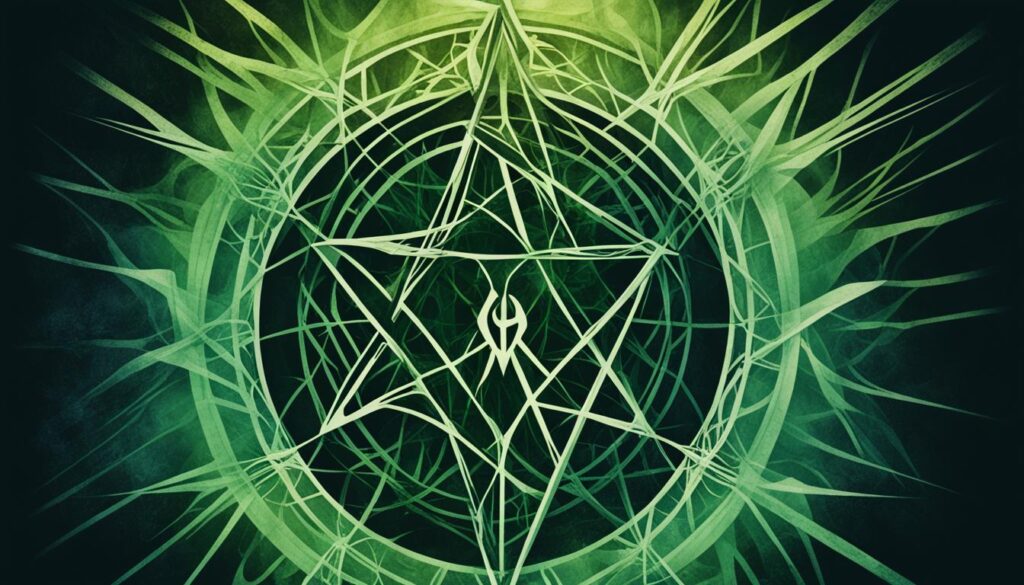
Negative, Disturbing Thought Life
The enneagram can be a breeding ground for negative and disturbing thoughts. Our minds can become overwhelmed with anxious, fearful, or worrisome thoughts, leading us down a spiral of negativity. We may even find ourselves trapped in thoughts that convince us nobody cares about us, fueling feelings of isolation and despair.
These thought patterns can be influenced by the shadow side of the enneagram and the malevolent forces that lurk within. It is essential for us to recognize the impact of these negative energies on our thought life and take steps to address them through enneagram shadow work.
“Negative thoughts are like unwelcome guests in our minds. They invade our peace, distort our perception of reality, and hinder our personal growth.”
Enneagram Shadow Work: Defying Demonic Influence
Enneagram shadow work involves delving into the darker aspects of our personalities and confronting the negative energies that manifest within the enneagram. By shining a light on the hidden corners of our minds, we can bring awareness to the demons that lurk within and begin the process of healing and transformation.
Through introspection, self-reflection, and embracing self-compassion, we can challenge the negative thought patterns that plague our enneagram experience. This work allows us to disengage from the influences of demons and navigate the enneagram with greater clarity and self-awareness.
Release the Grip of Negative Energies
It is crucial for us to understand that we have the power to release ourselves from the grip of negative energies within the enneagram. By acknowledging the presence of demons and their influence on our thought life, we can actively combat their power.
Engaging in practices such as meditation, affirmations, and prayer can help us reclaim control over our minds and replace negative thoughts with positive ones. Additionally, seeking support from trusted spiritual guides and communities can provide guidance and encouragement as we navigate the complexities of the enneagram.
Remember, we are not alone in this battle against demonic influence. By acknowledging and addressing the negative thought life associated with the enneagram, we can reclaim our inner peace and align ourselves with the positive energies that promote growth, healing, and spiritual transformation.
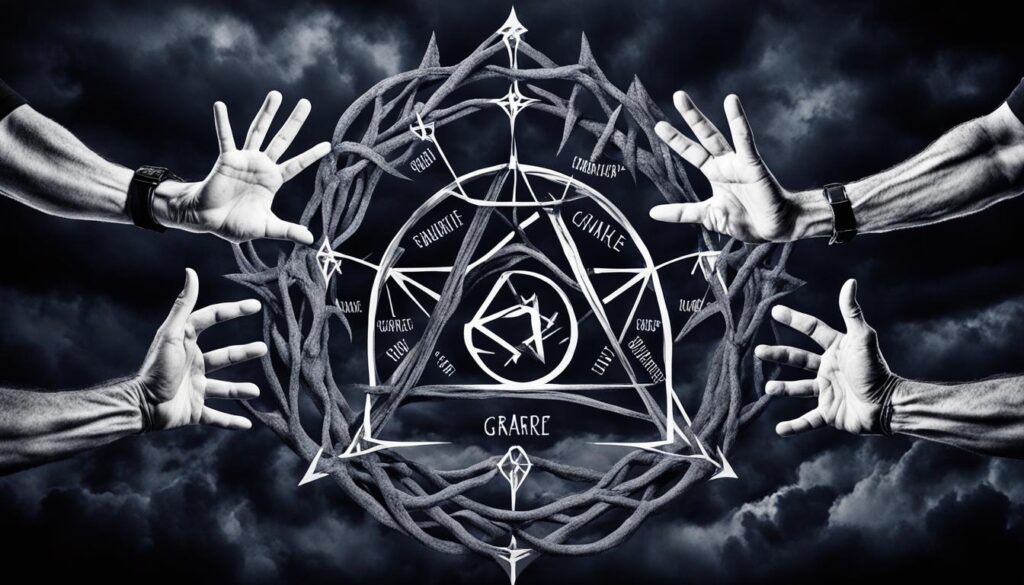
Thinking About Going Back to Your Old Lifestyle
The enneagram’s dark side may tempt us to consider returning to our old lifestyle patterns. It’s unfortunate that thoughts of going back to habits we have previously overcome can resurface. However, it is essential that we recognize these temptations as inner demons and stay focused on our transformative journey of enneagram self-awareness.

Old Emotional Wounds Resurfaced
The enneagram’s influence has the potential to resurface old emotional wounds that we believed we had already addressed. This can be an unexpected and distressing experience, as it brings back pain and struggles from our past that we thought were behind us.
Confronting these resurfaced wounds requires engaging in the spiritual warfare of the enneagram shadow and actively addressing the negative traits associated with our enneagram type. By doing so, we can begin the process of healing and transformation.
In recognizing and acknowledging these old emotional wounds, we become aware of the impact they have on our lives and relationships. This self-awareness is a crucial step towards growth and self-improvement.
Understanding the Enneagram Shadow
The enneagram shadow represents the darker aspects of our personality type that we may be unaware of or tend to suppress. It includes our negative traits, fears, and unconscious patterns of behavior. By delving into our enneagram shadow, we can gain a deeper understanding of ourselves and uncover the root causes of our emotional wounds.
Through this process, we discover that our enneagram type is not inherently bad or negative. Instead, it is a tool for self-discovery and growth. By shining a light on our enneagram shadow and facing our negative traits head-on, we can transcend our limitations and cultivate healthier, more fulfilling lives.
Healing through Spiritual Warfare
Spiritual warfare within the enneagram involves actively engaging in the battle against negative influences and forces that seek to hold us back. It is a transformative journey that requires courage, self-reflection, and a willingness to confront our inner demons.
By embracing spiritual warfare, we can reclaim our power and break free from the cycle of old emotional wounds and negative patterns. This process involves seeking divine guidance, developing self-awareness, and utilizing spiritual practices to protect ourselves from further harm.
It is essential to remember that the enneagram is not inherently evil or demonic. Rather, it is a tool that can uncover both our light and shadow aspects. By engaging in spiritual warfare within the enneagram, we can navigate the negative traits associated with our type and work towards healing and personal growth.
| Enneagram Shadow | Negative Traits |
|---|---|
| Repressed emotions | Emotional volatility |
| Unconscious fears | Anxiety and insecurity |
| Automatic behavioral patterns | Rigid and controlling tendencies |
| Resistance to change | Stagnation and fear of growth |
| Self-deception | Denial and avoidance |
Battling With Feelings of Guilt, Condemnation, and Shame
Demonic influence within the enneagram can have a profound impact on an individual’s emotional state, often leading to powerful feelings of guilt, condemnation, and shame. These negative emotions can be overwhelming and debilitating, leaving individuals feeling inadequate and burdened by their perceived flaws.
When under the influence of evil spirits and the dark forces present in the enneagram, individuals may find themselves consumed by a constant sense of guilt, constantly questioning their actions and feeling unworthy of love and acceptance. The constant self-condemnation can create a damaging cycle that leaves little room for self-forgiveness and growth.
Furthermore, the enneagram’s connection to malevolent forces can intensify feelings of shame, making individuals believe that their inherent nature is wicked and irredeemable. The weight of this shame can lead to a deep-seated sense of unworthiness, isolating individuals from healthy relationships and hindering their personal and spiritual development.
“The enneagram should be a tool for self-reflection and growth, but when influenced by dark forces, it can become a breeding ground for destructive emotions and destructive behavior.”
It is crucial for individuals to recognize the harmful influence of evil spirits and dark forces within the enneagram, and to actively engage in spiritual warfare to overcome these negative emotions. By seeking spiritual guidance, practicing self-compassion, and leaning on a supportive community, individuals can begin the journey towards healing and liberation from the clutches of guilt, condemnation, and shame.
Ultimately, by understanding the enneagram’s potential connection to malevolent forces and being proactive in addressing these influences, individuals can find hope, restoration, and a renewed sense of self-worth.
Find the courage to confront the dark forces within the enneagram and begin your transformative journey towards healing and spiritual freedom.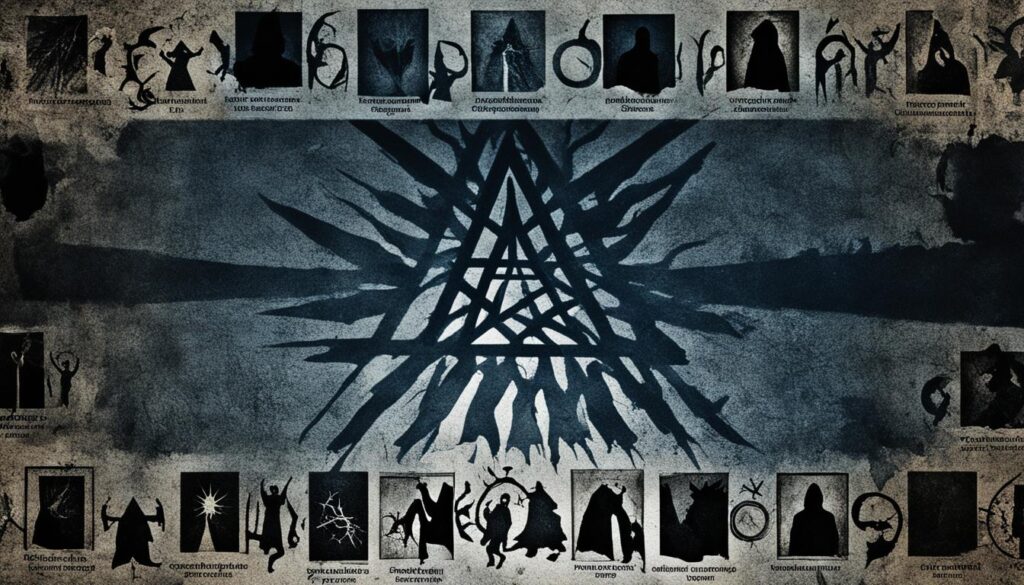
| Signs of Guilt, Condemnation, and Shame | Spiritual Strategies for Healing |
|---|---|
| Constant self-condemnation | Seek spiritual guidance |
| Questioning one’s actions | Practice self-compassion |
| Feeling unworthy of love and acceptance | Lean on a supportive community |
| Deep-seated sense of shame | Engage in spiritual warfare |
| Isolation from healthy relationships | Embrace self-forgiveness |
Feelings of Rejection, Belonging, and Loneliness Heightened
The enneagram’s dark side can lead to intensified emotions of rejection, not belonging, and loneliness. During such times, individuals may experience a profound sense of isolation, believing that they are not truly understood or accepted by others. These feelings can be strongly influenced by the presence of evil influences and the involvement in occult practices associated with the enneagram.
When enneagram enthusiasts delve into the depths of the occult, they often uncover dark personalities lurking beneath the surface. These dark personalities contribute to feelings of rejection and alienation, leading individuals to further distance themselves from the world around them. As the allure of the enneagram and its connection to the occult grows stronger, the isolation deepens, amplifying the feelings of not belonging.
In the pursuit of knowledge and self-discovery through the enneagram, it’s essential to be aware of the potential consequences of engaging with its darker aspects. The occult practices intertwined with the enneagram can, unbeknownst to many, create an atmosphere that fosters feelings of rejection, isolation, and loneliness.
It’s important to acknowledge that these feelings are not a true reflection of reality, as they are often fostered by the deceptive influences of evil. By recognizing the potential influence of the occult and the enneagram’s dark personalities, individuals can begin to dismantle the barriers that contribute to their sense of isolation and work towards finding a sense of belongingness within themselves and the world around them.

| Signs of Heightened Feelings of Rejection, Belonging, and Loneliness | Indicators of Evil Influences and Dark Personalities |
|---|---|
|
|
Confusion Over What You Believe
The enneagram’s dark side can lead to confusion and doubt over our beliefs. We may find ourselves questioning whether Jesus is truly for us, whether He is the only way. In the midst of this uncertainty, we may even be drawn towards satanic symbols.
This battle with demons and the enneagram’s dark energies can create a state of spiritual turmoil. The enneagram’s influence can challenge our faith and leave us grappling with deep-seated confusion.
It is important to navigate this battle with discernment and seek spiritual understanding. We must strive to separate the dark influences from the true essence of our beliefs, finding clarity and peace amidst the chaos.
“In the darkest times, our faith is tested, and it is through these trials that we often find the clarity and strength we seek.”
By acknowledging the potential connection between the enneagram and satanic symbols, as well as the presence of dark energies, we can engage in a transformative journey towards spiritual enlightenment. This journey involves confronting the battle with demons head-on, dispelling confusion, and reclaiming our true beliefs.
| Signs of Confusion Over What You Believe | Signs of Spiritual Clarity |
|---|---|
| Questioning Jesus’ relevance and significance | Gaining a deeper understanding of our faith |
| Drawn towards satanic symbols | Finding solace in the symbols of faith |
| Uncertainty about the path to salvation | Reaffirming our belief in Jesus as the way |
It is essential to navigate this battle with open hearts and minds, seeking truth and discernment in the face of confusion. By doing so, we can ultimately find spiritual clarity and overcome the challenges presented by the enneagram’s darker side.
Conclusion
Throughout our exploration of the connection between the enneagram and demonic influences, we have uncovered several signs and manifestations of potential spiritual interference. It is crucial to acknowledge the existence of the enneagram’s dark side and actively engage in spiritual warfare to counteract its negative effects. By seeking transformation and discernment, we can navigate the enneagram’s potential dark energies and find peace amidst the battle with demons.
Recognizing the presence of demonic symbolism within the enneagram is essential for our spiritual growth and protection. The enneagram, with its rich symbolism and deep insights into personality types, can be a tool for self-discovery and personal development. However, we must remain vigilant and discerning, guarding ourselves against the potential influence of malevolent forces that seek to distort the enneagram’s true purpose.
As we continue to explore the enneagram and its relevance to our lives, let us remember the importance of spiritual discernment. By understanding the battle with demons and actively seeking transformation, we can navigate the complexities of the enneagram with wisdom and clarity. May we harness the power of this powerful tool for self-awareness while remaining grounded in our spiritual journey.
FAQ
What are some signs of demonic influence in enneagram types?
Signs of demonic influence in enneagram types can include feeling discouraged, defeated, and depressed; experiencing a loss of spiritual desire; physical fatigue and sickness; doubting God’s goodness; negative and disturbing thought patterns; thoughts of returning to old lifestyle habits; resurfacing of old emotional wounds; battling with guilt, condemnation, and shame; heightened feelings of rejection and loneliness; confusion over beliefs.
How does feeling discouraged, defeated, and depressed relate to demonic influence in the enneagram?
Feeling discouraged, defeated, and depressed can be a sign of demonic influence in the enneagram. It involves a sense of hopelessness, overwhelming burdens, lack of peace, and feeling like giving up. These negative emotions can be fueled by the dark energies associated with the enneagram and can indicate the presence of evil influences.
What does it mean to experience a loss of spiritual desire in relation to demonic influence in the enneagram?
Experiencing a loss of spiritual desire is another sign of potential demonic influence in the enneagram. This includes difficulties with prayer, connecting with other Christians, and engaging in spiritual activities. It may also involve a draw towards occult practices or falling into the influence of satanic forces.
How does physical fatigue and sickness relate to demonic influence in the enneagram?
Physical fatigue and sickness can be manifestations of demonic influence in the enneagram. This can present as feeling drained, lacking energy, and having no motivation. These physical manifestations may be associated with the presence of supernatural entities and the evil energies connected to the enneagram.
What is the connection between doubting God’s goodness and demonic influence in the enneagram?
Doubting God’s goodness is a sign of potential demonic influence in the enneagram. This can involve struggling to trust God, feeling anger or disappointment towards Him, and believing that God is punishing or mad at oneself. It is important to understand the connection between negative energies, spiritual protection, and the doubts that may arise within the context of the enneagram.
How does the enneagram influence negative and disturbing thought patterns?
The enneagram can be a breeding ground for negative and disturbing thoughts. This can include anxious, fearful, or worrisome thoughts, as well as thoughts that convince individuals that nobody cares about them. These thought patterns may be influenced by demons and the shadow side of the enneagram.
How does the enneagram tempt individuals to return to their old lifestyle patterns?
The enneagram’s dark side may tempt individuals to consider returning to their old lifestyle patterns. This can involve placing thoughts in their minds about going back to habits that they have previously overcome. It is essential to recognize these temptations as inner demons and focus on the transformative journey of enneagram self-awareness.
What does it mean for old emotional wounds to resurface within the enneagram?
The enneagram’s influence can resurface old emotional wounds that individuals believed they had already addressed. This can lead to a reemergence of pain and struggles that they thought were in the past. It is important to engage in the spiritual warfare of the enneagram shadow and confront these negative traits.
How does the enneagram contribute to feelings of guilt, condemnation, and shame?
Demonic influence within the enneagram can fuel feelings of guilt, condemnation, and shame. Individuals may struggle with feeling inadequate, not good enough, and burdened by their perceived flaws. These feelings can be influenced by evil spirits and the dark forces present in the enneagram.
How does the enneagram heighten feelings of rejection, not belonging, and loneliness?
The enneagram’s dark side can intensify feelings of rejection, not belonging, and loneliness. Individuals may feel a sense of isolation, believing that nobody truly understands them or accepts them. These feelings can be influenced by evil influences and the occult practices associated with the enneagram.
What is the effect of the enneagram on confusion over one’s beliefs?
The enneagram’s dark side can lead to confusion and doubt over one’s beliefs. Individuals may question whether Jesus is truly for them, whether He is the only way, and may be drawn towards satanic symbols. This battle with demons and the enneagram’s dark energies can create uncertainty and spiritual turmoil.
Felicity, our Author, pens in-depth articles and guides that delve into the heart of personal discovery. Her narrative-driven approach weaves together theory, practice, and personal anecdotes, making the journey of self-exploration both relatable and inspiring. Felicity’s contributions help illuminate the path for those seeking a deeper understanding of themselves and their relationships.
The Big Five (OCEAN)
Deep Ocean Assessment for Tsunami Reporting: A How-To Guide
Trek into the world of tsunami detection with DART technology, uncovering the secrets of deep-sea surveillance and coastal protection.

As we explore the complex realm of tsunami detection using the DART system, a captivating landscape of techniques is revealed. The interaction between pressure changes, alert levels, and forecasting assessments showcases a meticulous approach to monitoring natural disasters.
But what lies beyond these algorithmic steps and theoretical analyses? What practical implications arise from this intricate dance with the deep ocean? The answer to these questions may shed light on the critical role DART technology plays in safeguarding coastal communities worldwide.
Key Takeaways
- Tsunami detection relies on pressure fluctuations in specific frequency bands for accurate reporting.
- Understanding sensor frequency response is crucial for enhancing early warning systems.
- Rayleigh waves from earthquakes trigger rapid reporting modes in DART gauges.
- Analyzing pressure signatures aids in differentiating seismic events for effective monitoring.
Tsunami Detection Algorithm Overview
The Tsunami Detection Algorithm in DART gauges autonomously detects and reports tsunamis by analyzing pressure fluctuations within the specific tsunami frequency band. When a minimum detection threshold of 3 cm is exceeded in the North Pacific, the gauges trigger the reporting mode.
This shift prompts the algorithm to predict tsunamis using a cubic polynomial fit to bottom pressure observations, providing a prediction time of 5.25 minutes. To ensure accuracy, instrumental spikes above 100 mm are filtered out to distinguish tsunamis from noise or anomalies.
The algorithm activates the reporting mode when the set threshold is surpassed, indicating a potential tsunami event. After four hours without detection, the gauges return to monitoring mode, ready to resume their vigilant observation of bottom pressure dynamics.
This systematic approach ensures efficient and reliable tsunami detection, allowing for timely warnings and enhanced coastal safety.
Theoretical Pressure Series Analysis

Analyzing pressure fluctuations in tsunami frequency bands involves a comprehensive evaluation of theoretical pressure series data to identify potential anomalies and trigger reporting modes as necessary.
The detection accuracy heavily relies on recognizing pressure differences within these specific frequency bands, which can be challenging due to initial discrepancies between time series and constant values.
Monitoring these pressure fluctuations over time reveals that the values tend to stabilize below threshold levels after approximately 4-5 hours.
Software algorithms play a critical role in this process by automatically initiating reporting modes when threshold exceedances occur in the pressure data.
Theoretical pressure series analysis not only aids in detecting anomalies but also assists in event flagging for further examination and continuous monitoring.
Frequency Response Evaluation
Upon examining the frequency response evaluation of deep ocean sensors, we observe a pronounced sensitivity to tsunami signals within the 2-90 minute band, highlighting the critical role these sensors play in detecting and analyzing tsunami events accurately.
- The near-unity response in the tsunami band emphasizes the importance of deep ocean sensors in capturing crucial tsunami signals.
- Rapid attenuation at lower frequencies enhances the prominence of tsunami and high-frequency signals in pressure readings, aiding in the precise detection of tsunami events.
- Deep ocean sensors excel at amplifying tsunami and high-frequency signals while effectively reducing background noise, ensuring reliable detection capabilities.
- Understanding the frequency response characteristics of these sensors is fundamental for refining tsunami detection algorithms and bolstering early warning systems to mitigate potential tsunami threats effectively.
Observed Tsunami Events Analysis

In analyzing observed tsunami events, we identify small-amplitude tsunamis in the North Pacific region. These detected tsunamis didn't reach the threshold necessary to activate the rapid reporting mode in DART gauges.
The analysis revealed that during these events, background noise levels in the pressure data either remained constant or slightly increased. The pressure fluctuations observed were attributed to Rayleigh waves generated by specific earthquakes.
Interestingly, the pressure differences caused by Rayleigh waves from the 1996 Andreanof Island earthquakes were of a magnitude that would trigger the rapid reporting mode in DART gauges, highlighting the variability in tsunami characteristics.
Rayleigh Waves Interpretation
Our examination of Rayleigh waves in the context of observed tsunami events in the North Pacific region reveals crucial insights into the seismic surface wave's interpretation and its significance in earthquake and tsunami monitoring.
- Rayleigh waves, as a seismic surface wave, propagate horizontally along the Earth's surface, inducing ground motion.
- Pressure sensors deployed on the seafloor detect the presence of Rayleigh waves generated by earthquakes.
- These waves manifest as high-frequency fluctuations in pressure data observed by DART gauges, providing valuable information for earthquake monitoring.
- By analyzing the distinct signatures of Rayleigh waves in pressure readings, scientists can differentiate between seismic events and better comprehend their role in tsunami generation.
Understanding Rayleigh waves' behavior and interpreting their signals is of utmost importance in enhancing our ability to monitor earthquakes and predict potential tsunami events accurately. The data obtained from studying Rayleigh waves aids in advancing our comprehension of seismic activities and their connection to tsunami occurrences.
Frequently Asked Questions
How Is the Deep Ocean Assessment and Reporting of Tsunami DART Helpful to Humans?
The deep ocean assessment and reporting of tsunami DART is incredibly helpful to humans. By providing early detection of tsunamis through deep ocean sensors, DART aids in issuing timely warnings, minimizing damage, and saving lives.
These sensors accurately predict tsunami wave behavior, transmitting crucial data to warning centers in real-time. The effectiveness of DART in forecasting tsunamis has been instrumental in safeguarding coastal communities and enhancing disaster preparedness efforts.
How Are Tsunamis Reported?
When tsunamis occur, they're reported using DART gauges that autonomously detect pressure fluctuations in the tsunami frequency band.
These gauges trigger reporting mode when pressure amplitudes exceed a minimum threshold of 3 cm in the North Pacific.
Once activated, the DART gauges remain in rapid reporting mode for at least four hours, continuously monitoring tsunami activity to provide crucial information for early warning systems and disaster management efforts.
Which of the Following Is Measured by the Deep Ocean Assessment and Reporting of Tsunamis DART System?
We measure water column pressure changes with the DART system to detect tsunami waves above. This system sends data from seafloor sensors to surface buoys and then to satellites for analysis.
By combining this sensor data with ocean floor maps, experts accurately predict tsunami behavior near coastlines.
The DART system is crucial for issuing tailored tsunami forecasts and early warnings to at-risk areas.
What Are the 5 Stages of a Tsunami?
In the lifecycle of a tsunami, five distinct stages unfold.
First, the initiation occurs due to seismic activity, triggering the displacement of water. This leads to the splitting phase, where energy forms multiple wave trains.
Subsequently, waves amplify in height when transitioning from deep to shallow waters.
The run-up stage follows as waves surge onto the coast, inundating land areas.
What Is the Process for Conducting a Deep Ocean Assessment for Tsunami Reporting?
The process for conducting a deep ocean assessment for tsunami reporting involves utilizing the advanced technology of the deepocean tsunami warning system. This system is designed to gather data from various sensors placed deep below the surface, enabling scientists to monitor and analyze oceanic activity. By collecting and analyzing this data, experts can accurately detect and report potential tsunamis, ensuring early warning and preparedness measures can be implemented to save lives and minimize damage.
Conclusion
In conclusion, the DART system serves as a vital tool in the early detection and reporting of tsunamis, offering a comprehensive methodology for analyzing pressure fluctuations and predicting tsunami occurrences.
By evaluating the frequency response of pressure differences and interpreting Rayleigh waves, the DART system enhances our understanding of tsunami events and aids in mitigating their potential impact.
Its practical applications underscore its crucial role in the U.S. National Tsunami Hazard Mitigation Program, providing invaluable insights for tsunami monitoring and reporting.
Eugene brings a fresh, dynamic voice to our platform as one of our talented Writers. Specializing in research-driven content, he explores the latest findings in psychology and personal growth, translating them into actionable insights for our readers. Eugene’s work is fueled by a curiosity about what makes us tick and a desire to help others unlock their potential.
The Big Five (OCEAN)
How to Access Ocean County NJ Assessment Records
Trek through the digital landscape of Ocean County, NJ assessment records to unearth hidden treasures and valuable insights waiting to be discovered.
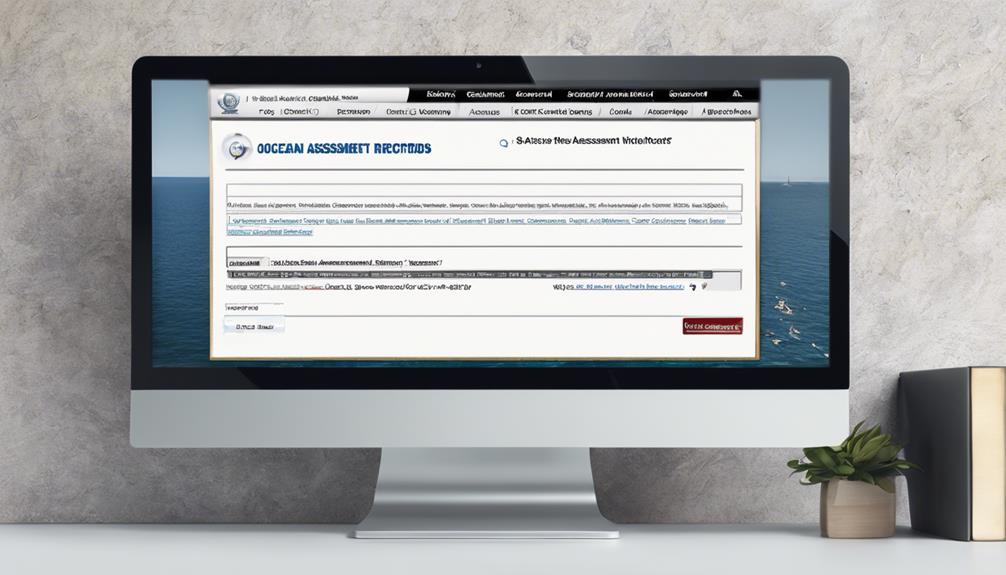
Standing at the digital shoreline of Ocean County, New Jersey, we are presented with a vast expanse of assessment records waiting to be explored.
Navigating through the intricate web of property evaluations and tax information can seem daunting at first glance. However, by unraveling the layers of resources available, we uncover a treasure trove of knowledge that can guide us through the depths of property assessment intricacies.
Join us as we embark on a journey to unveil the secrets of accessing Ocean County NJ assessment records, unlocking valuable insights along the way.
Key Takeaways
- Register online to access Ocean County NJ assessment records easily.
- Use the property search tool to find specific property details.
- Understand assessment data significance for informed financial decisions.
- Analyze property values, tax rates, and assessment ratios for accurate tax planning.
Overview of Ocean County NJ Assessments
Ocean County NJ assessments are a pivotal annual process that determines property values for taxation purposes. The County utilizes a tax rate of $2.323 per $100 of assessed value, with a ratio set at 72.76%. Property inspections are conducted by Realty Data Systems (RDS), and their inspectors can be identified by their RDS credentials. It's crucial for property owners to understand the assessment process as it directly impacts their tax obligations within the County.
The County's taxation system relies heavily on accurate property assessments to ensure fairness and transparency in tax allocations. Property owners should be aware of important dates, such as the tax appeal deadline of January 17th at 5:00 pm, set by the Monmouth County Board of Taxation for 2023. Additionally, Ocean County offers the convenience of online assessment appeal filing, streamlining the process for residents to address any discrepancies in their property tax assessments. Understanding the intricacies of property tax assessments in Ocean County is essential for all County residents.
Online Portal Registration Process
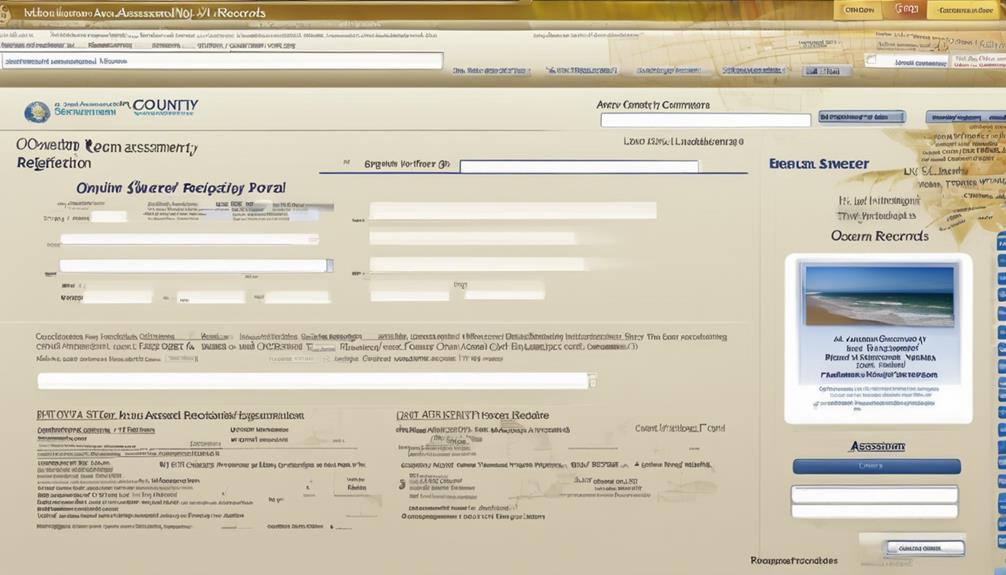
Upon visiting the official website of the Ocean County Clerk, users can initiate the registration process for accessing assessment records online by locating the 'Property Records Search' section. To set up your online portal account, follow these steps:
- Fill in the required information, including your name, email address, and create a password for account security.
- Verify your email to activate your account and gain access to the online portal.
- Once registered, you can log in anytime to explore Ocean County NJ assessment records, property details, and related information conveniently from your home or office.
The online portal offers a user-friendly interface that allows seamless navigation through property records in Ocean County. By registering and logging in, users can harness the power of technology to access vital property information with ease.
Searching for Specific Property Records
To efficiently locate specific property records within Ocean County NJ Assessment Records, utilize the online search tool provided. This tool allows users to access a wealth of information, including property tax records, ownership history, and tax assessments.
By entering the property address or parcel number, individuals can verify details such as lot size, building information, and assessed value. Moreover, the search tool enables users to retrieve data on property transfers, deed recordings, and historical assessments, providing a comprehensive view of the property's background.
Staying informed about changes in property assessments and tax obligations is crucial, and the online search tool simplifies this process by offering up-to-date records. Whether you're a homeowner, real estate professional, or researcher, accessing specific property information through this tool ensures that you have the necessary data to make informed decisions and understand the property's financial history.
Understanding Assessment Data
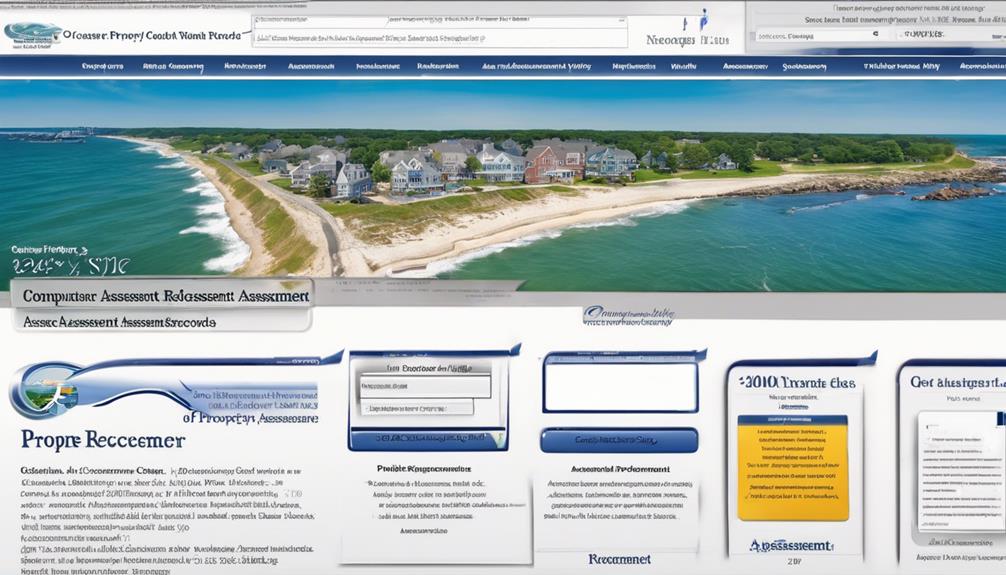
Understanding assessment data in Ocean County, NJ involves analyzing property values, tax rates, and assessment ratios to accurately calculate tax liabilities and comprehend the impact of property value on tax obligations.
When delving into assessment data, it's essential to consider various aspects that can influence property tax assessments:
- Property Values: Understanding how property values are determined is crucial for interpreting tax obligations accurately.
- Tax Rates: Analyzing tax rates is key to grasping how much tax a property owner will owe based on the property's assessed value.
- Assessment Ratios: Assessment ratios provide insight into how property values are assessed compared to their market worth.
Utilizing Assessment Records for Decision Making
When utilizing assessment records for decision making in Ocean County, NJ, individuals can access detailed information on property values, tax assessments, and ownership history to make informed choices regarding real estate investments or property evaluations. By leveraging assessment records, one gains insights into property values, tax obligations, and market conditions, enabling strategic decision-making. Here's a breakdown of how assessment records can aid in decision making:
| Benefits | Description | Impact |
|---|---|---|
| Understanding Property Values | Evaluate current market value of properties | Make informed investment decisions |
| Assessing Tax Obligations | Determine tax implications and obligations for each property | Plan finances effectively |
| Analyzing Market Conditions | Stay updated on market trends and conditions to identify opportunities | Make timely real estate decisions |
Frequently Asked Questions
How Do I Find My NJ Property Tax Records?
We find our NJ property tax records by visiting the Ocean County Tax Assessor's website. There, we can search for our property using the address or block and lot number. This search helps us access detailed information like property value, tax rates, deductions, and assessment history.
We make sure to check our property tax records annually for any updates or changes. If we need help, we contact the Ocean Township Tax Assessor's office for assistance.
Can I Get a Copy of My Deed Online Nj?
Yes, we can obtain a copy of our deed online in NJ. By accessing the Ocean County Clerk's website, we can search for and download our deed using the property details like block and lot numbers.
The online system offers easy access to property documents, including deeds, enabling us to securely download and print a copy from the comfort of our home or office.
How Do I Find My Block Lot and Qualifier in Nj?
We locate our Block, Lot, and Qualifier in NJ through the Tax Assessor's office or online databases. These unique identifiers pinpoint precise property locations, aiding in assessments and transactions.
The Block signifies an area in a town, the Lot specifies a plot within that block, and the Qualifier offers additional details. Understanding these codes is crucial for property-related matters in Ocean County, NJ.
Contacting the appropriate authorities helps us find our specific identifiers quickly and accurately.
What Is the Phone Number for Ocean County Public Records?
The phone number for Ocean County public records is (732) 929-2053. It's a direct line for inquiries about land or tax records through the County Clerk's office.
Callers can access information on property assessments, ownership data, and historical records. Additionally, details on recording requirements, fees, and appointment scheduling for accessing public records are available by calling this number.
It serves as a hub for various public record services offered by Ocean County.
What Information Can I Find in Ocean County NJ Assessment Records?
When accessing Ocean County assessment records, you can find information about property values, ownership details, and tax assessments for properties within the county. Ocean County assessment records are a valuable resource for individuals looking to gather information about real estate within the area.
Conclusion
In conclusion, accessing Ocean County NJ assessment records is like diving into a vast ocean of information, with each record holding valuable insights for property owners and investors.
By navigating through the online portal and understanding assessment data, individuals can make informed decisions and unlock the potential hidden within these records.
So, take the plunge and explore the depths of Ocean County's assessment records to uncover opportunities that await.
Eugene brings a fresh, dynamic voice to our platform as one of our talented Writers. Specializing in research-driven content, he explores the latest findings in psychology and personal growth, translating them into actionable insights for our readers. Eugene’s work is fueled by a curiosity about what makes us tick and a desire to help others unlock their potential.
-
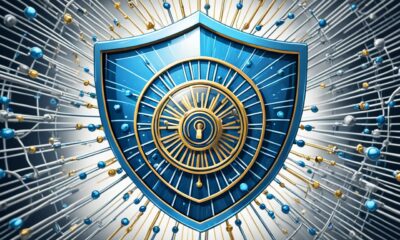
 Self-Understanding3 months ago
Self-Understanding3 months agoUnderstanding DMCA Protections & Compliance
-

 Relationship Dynamics3 months ago
Relationship Dynamics3 months agoCan a Man Truly Love His Side Chick
-

 Enneagram of Personality1 week ago
Enneagram of Personality1 week agoEnneagram Test: Printable Version for Easy Self-Discovery
-

 Personality Exploration2 weeks ago
Personality Exploration2 weeks agoDiscover Your Traits with Atomic Habits Personality Test
-

 Personality Exploration3 months ago
Personality Exploration3 months agoDOPE Personality Test Explained: Traits & Types
-
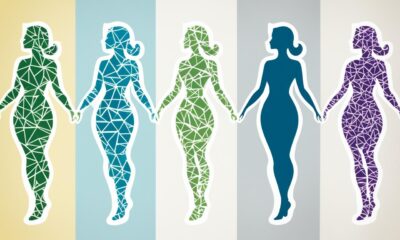
 Personality Exploration3 months ago
Personality Exploration3 months agoAlpha Beta Omega Sigma Female Personality Quiz
-

 Personality Exploration2 weeks ago
Personality Exploration2 weeks agoAlpha Beta Omega Personality Test Explained
-
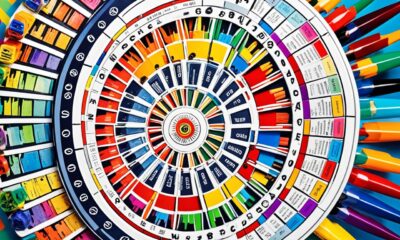
 Self-Understanding2 months ago
Self-Understanding2 months agoDiscover Your Traits with Our Personality Test
